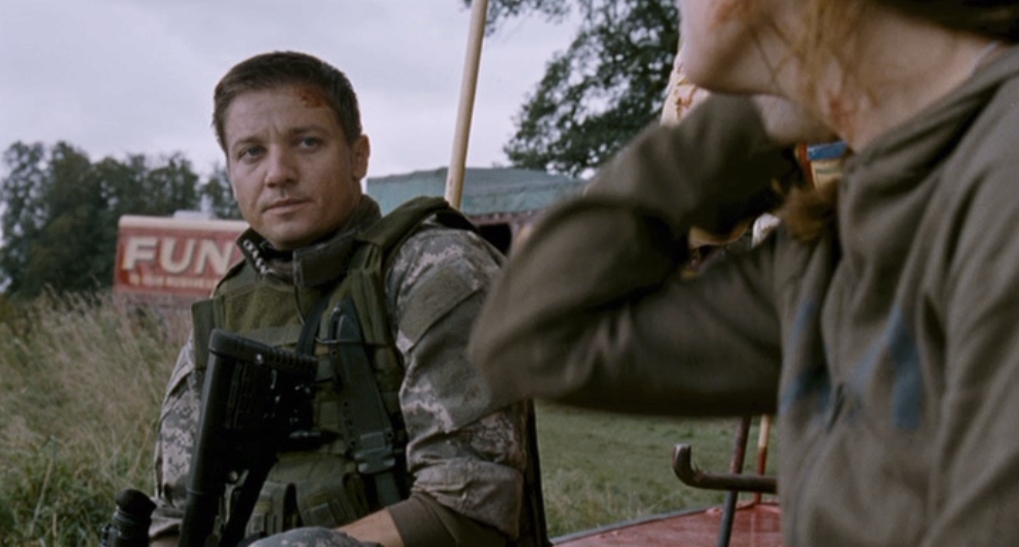
As shown during a harrowing sequence here, it’s very hard to separate “the infected” from the regular civilians. Just for example, soldiers are trained to aim for the body (the centre of mass) rather than the head. In Max Brooks’ fantastic World War Z – which I wholeheartedly recommend to any zombie fans out there – the author suggests that conventional military tactics won’t work on the undead, and the unconventional nature of the threat exposes the weakness in standard military planning. And you can guess what is going to substitute for insurgents. The metaphor is decidedly straightforward – even down to the terminology. The secure “green zone” in Central London is patrolled by armed troops and rooftop snipers. It seems almost ridiculous that the crisis resolved itself so fast, but American troops have landed and are seeking to make the country safe for habitation again. We’re shown a Britain that has withstood the storm. Unlike the Romero movies where things get consistently worse as we join the sequels, here things are under control. However, 28 Weeks Later subverts this expectation. The lives of the protagonists are occasionally spared, but we’re certain that death will catch up with them eventually. Most zombie movies end on a depressing note – the audience is assured that the undead are unstoppable, they will keep coming. While the original offered us the glimpse of a Western civilisation coming to glimpse with their own mortality and questioning their values in the face of an impossible threat, the sequel pushes the boat out a bit. I remarked in reviewing Romero’s films throughout the week that zombies are always tied to commentary on their times.

The movie also benefits from a rather wonderful socially relevant subtext.

Picking a cast like that when they were all relatively unknown performers is quite an accomplishment. And this ignores the presence of certified strong supporting players in relatively small roles (like Harold Perrineau and Mary McCormack). While Robert Carlyle was really the only “name” actor going into this film (and it’s a brave role for such a recognisable actor, which should be applauded), looking back several years later I can spot Oscar-nominee Jeremy Renner, Rose Byrne and Idris Elba – all solid choices. I know it’s kinda contrary to the “judge every film on its own merits” ethos that us critical types are clearly intended to espouse, but I like to think that the fate of a movie’s cast after its release can serve as a reflection on the film itself. I said above it was a great film, and I mean it. While I always feel a little uncomfortable watching 28 Days Later with its distorted colours, I was able to get quite comfortable quite fast with the sequel.ĭon’t get me wrong. Still, the scale comes at a cost – it’s harder to directly engage with the film and the characters.

In fairness, it makes great use of the tools that were never really available to its predecessor – firebombs and gas attacks are rendered in stunning CGI detail while the original film struggled to blow up a petrol station. The film just feels like a stylish blockbuster. It isn’t just the presence of actors like Jeremy Renner and Harold Perrineau among the cast, nor is it the fact that it is focused on the notion of an American occupation of a foreign country.

If 28 Days Later felt distinctively British, 28 Weeks Later feels strangely American. The army had to find something to keep themselves occupied. It’s a great movie, but one can’t help but get the sensation that the fine polish applied to it undercuts some of the impact. It’s shot like any other zombie movie, and clearly intended to reach an even wider audience than the original cult hit. In contrast, 28 Weeks Later feels a much more managed affair, and a much more conventional one. Filmed in High Definition with an intimate approach, the movie felt somehow more tangible and organic than most of these films, managing a genuine emotional impact that it’s easy to lose sight of in these fantastical narratives – its small scale and quirky design (along with hyper saturation) lent the movie a very distinct feel, the sensation that this was a “guerilla” zombie film – shot in the early morning on abandoned streets rather than closing off sections of town. 28 Days Later felt strangely British, with its almost quaint surroundings and “island fortress” mentality. So be sure to check back all week, as we’ll be running posts on the living dead. Welcome to the m0vie blog’s zombie week! It’s a week of zombie-related movie discussions and reviews as we come up to Halloween, to celebrate the launch of Frank Darbont’s The Walking Dead on AMC on Halloween night.


 0 kommentar(er)
0 kommentar(er)
